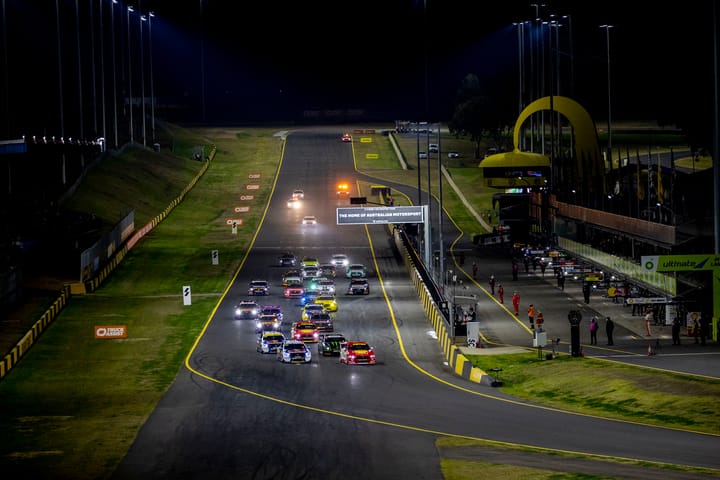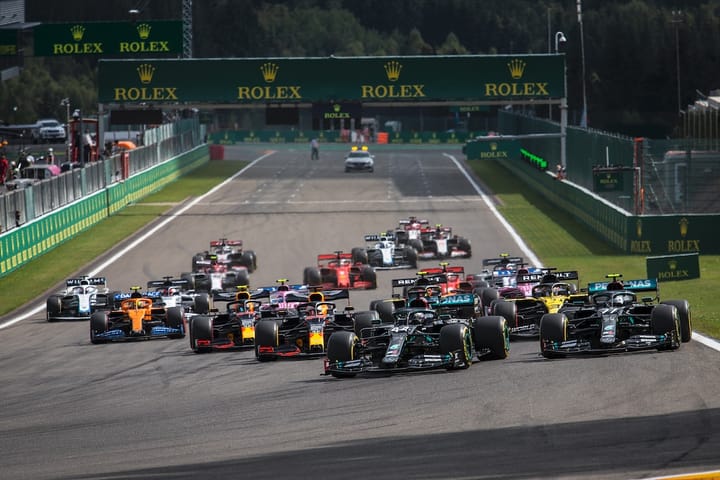Hot Shots

It’s been more than 30 years since Daniel Kalisz went to his first car race.
Considering he is only 37, it’s a remarkable achievement for the super-talented Adelaide-based photographer.
He has dedicated himself to his craft and to motorsport and is now recognised as one of the most creative lensmen in the business.
Kalisz is a full-time fixture at major events, from Supercars and Formula One to S5000 and TCR Australia.
His class and commitment, as well as his ability to put emotion into his pictures, is why he is the resident shooter for Race News.
But his story didn’t start that way.
“My first race meeting was the Friday of the 1987 Australian Grand Prix in Adelaide. I was four years of age. Dad was a massive Formula One fan,” Kalisz says.
He was hooked from an early age but it was photography, not driving or team management, that lit his fire.
“I taught myself. I guess ‘learning by doing’ is the best way of describing it.”
He was a regular at newsagents and had a plan.
“I used to get F1 Racing magazine and look a the picture. With the ones I liked, I went to a club race and tried to do the same thing.
“I worked out how to do creative pictures and built up my bank of knowledge.”
His talent and insight is reflected in his personal pick of his Top 10 pictures, from moody character shots to action and even studio portraits.
Kalisz always pushes to edge to get the best image, from trekking tracks to fine new angles to lighting his subjects to capture a special moment.
His Hot Shots are a mixed bag but there is a common thread in the composition and lightning. They are moody and insightful.
Plenty were taken at Bathurst, although Kalisz says it’s not his favourite track.
“I actually don’t think Bathurst is the most picturesque circuit. I don’t get as much of a buzz there as I get at Adelaide or Phillip Island,” he says.
“But the 12-Hour, coming from the darkness into the light, is amazing.”
His brief for this Top Shots collection was simple – to find his 10 favourite pictures and tell the story behind them, with the technical details.
But, even then, he over-achieved and there is a very special 11th shot that captures one of the most dramatic moments in the recent history of Australian motorsport.
“I’m sure I’ve missed something. It’s hard to have favourite pictures, because you’re always think about the next one,” Kalisz says.
1.
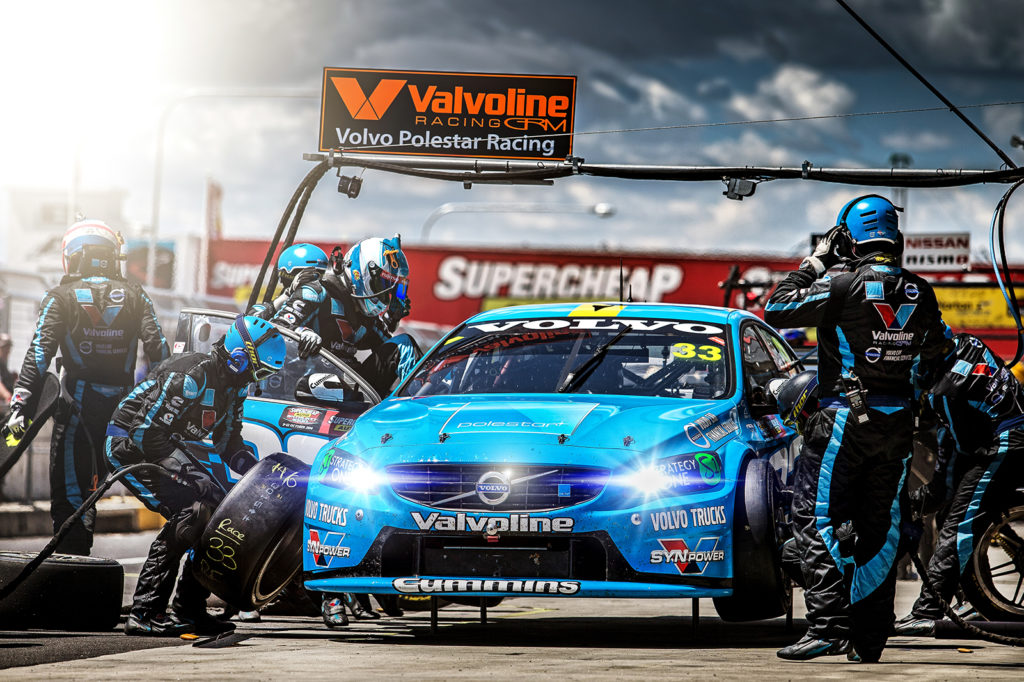
This was the break-out year in my career as I landed the job as official photographer for Volvo in Supercars.
This driver change was captured late in the race and at this point I did not have pitlane access, so I had to be
creative.
I positioned myself several garages down from the Volvo box, got down as low as possible, and caught this image of Scott and Alex Premat’s changeover.
Canon EOS-1D X with 70-200mm lens
ISO 100, aperture F/4, Shutter speed 1/2000sec
2.
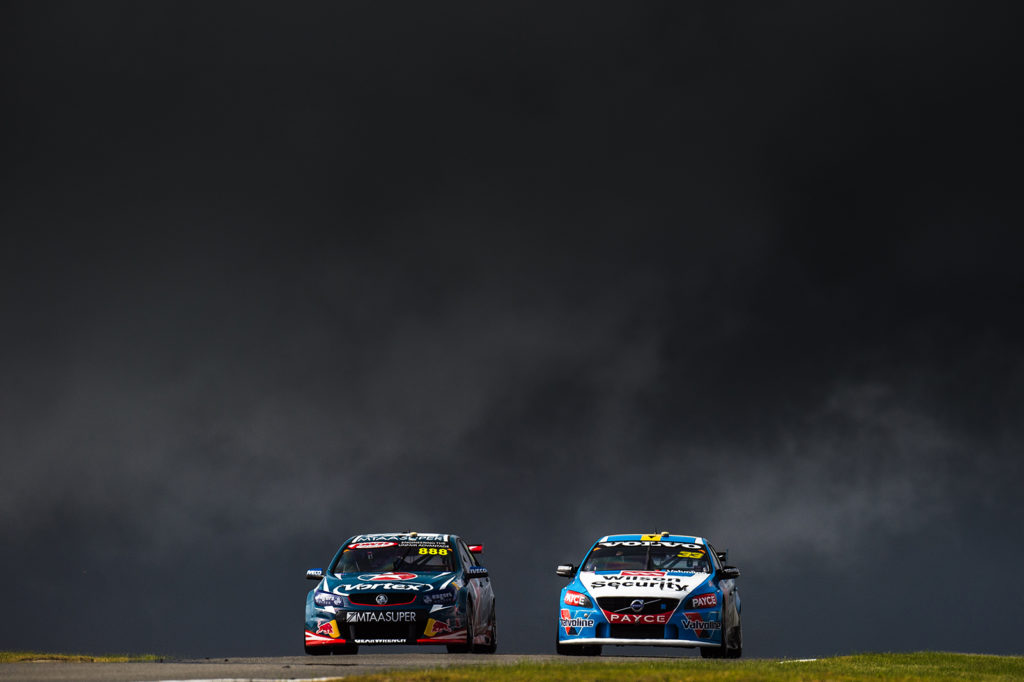
Two of the greats in one frame, side-by-side over the brow in Perth.
The moody backlight sky ensures a pretty picture. Done.
Nikon D4S with 500mm lens
ISO 400, aperture F/7.1, shutter speed 1/2000sec
3.
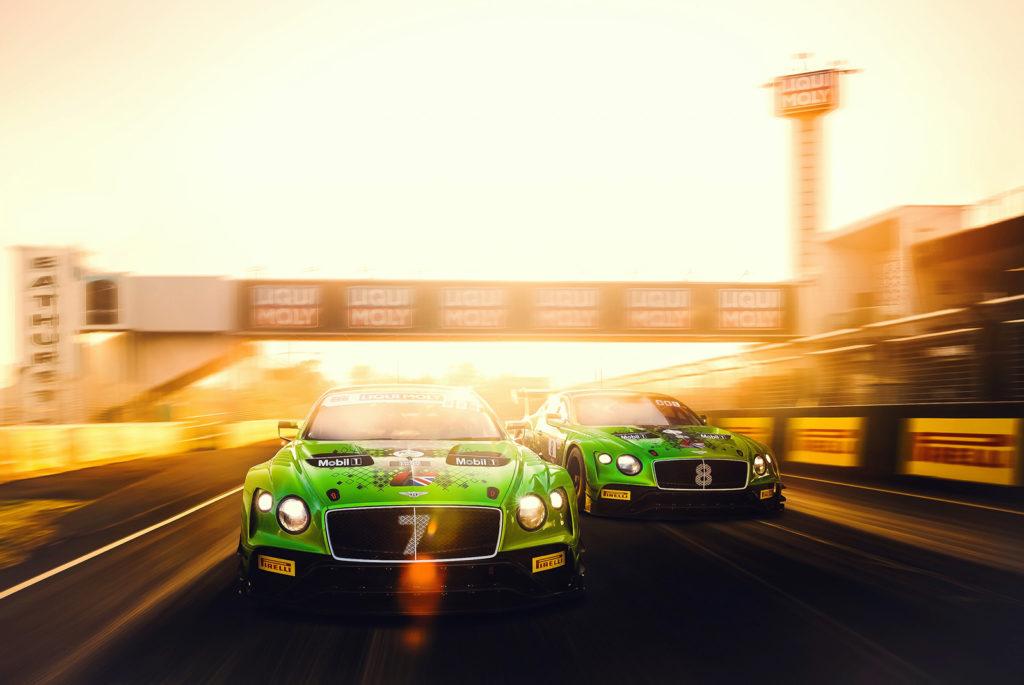
This was all about the thunder down under and deserves big thanks to Becs, press officer for Bentley Motorsport.
She has a tremendous desire and determination to help create an amazing preview picture prior to each event, and nailing this image was pretty special after working for Bentley for the past four years and then seeing the #7 car take victor.
This is a composite image, made up of two separate frames, and some people might think that’s cheating, but in an ever advancing technological world it’s important to stay at the top of the game and adapt to each new challenge.
The base image of the cars was captured in pitlane with Becs, myself and a help from a few marshals as we wheeled the cars into position at 6am to wait for the sun to appear over the horizon. With the second image captured on the main straight, the images were send to my retoucher in London and two hours later – after several WhatsApp messages – I took delivery of the final image which I colour-corrected in Lightroom.
To do this on a race weekend and at this time is pretty much unheard of but the result is pretty amazing. Nice one.
Canon EOS R
Lens RF 28-70mm
4.
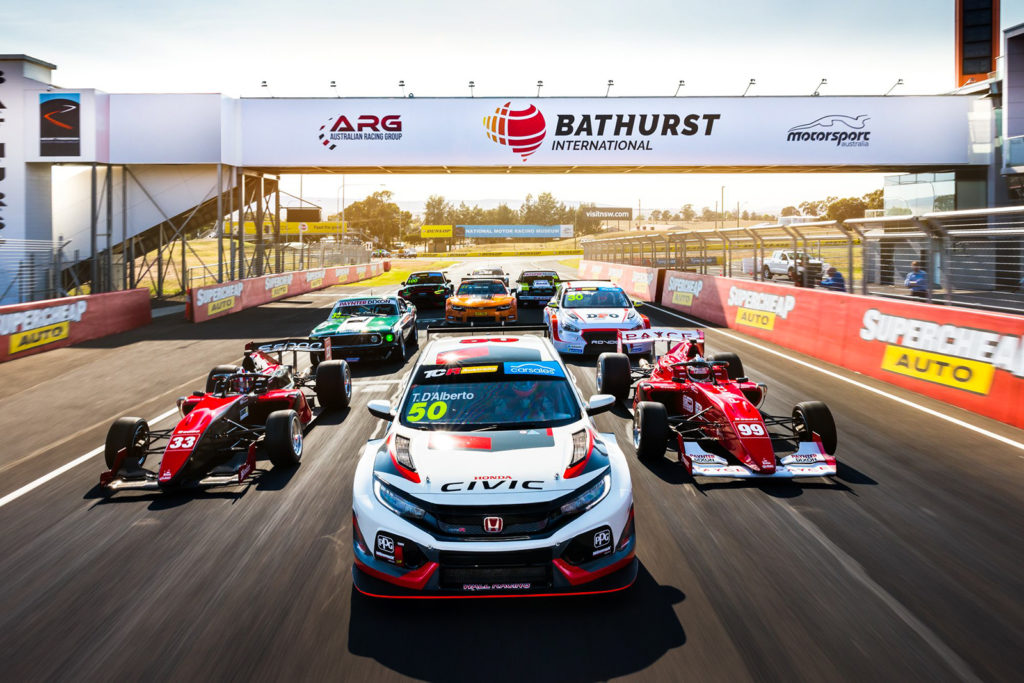
It’s not every day that you have the opportunity to photograph a packaged tracking shot on a closed course at Mount Panorama.
This was sunrise, we had the whole track to ourselves, and I was the conductor to compose a picture with nine thundering but mixed-and-matched race cars from the Australian Racing Group categories.
There was only one lap and one chance to nail a piece of history, and one of the most important pictures in my career.
Canon EOS R with RF 28-70mm lens
ISO 50, aperture F/11, shutter speed 1/20sec
5.
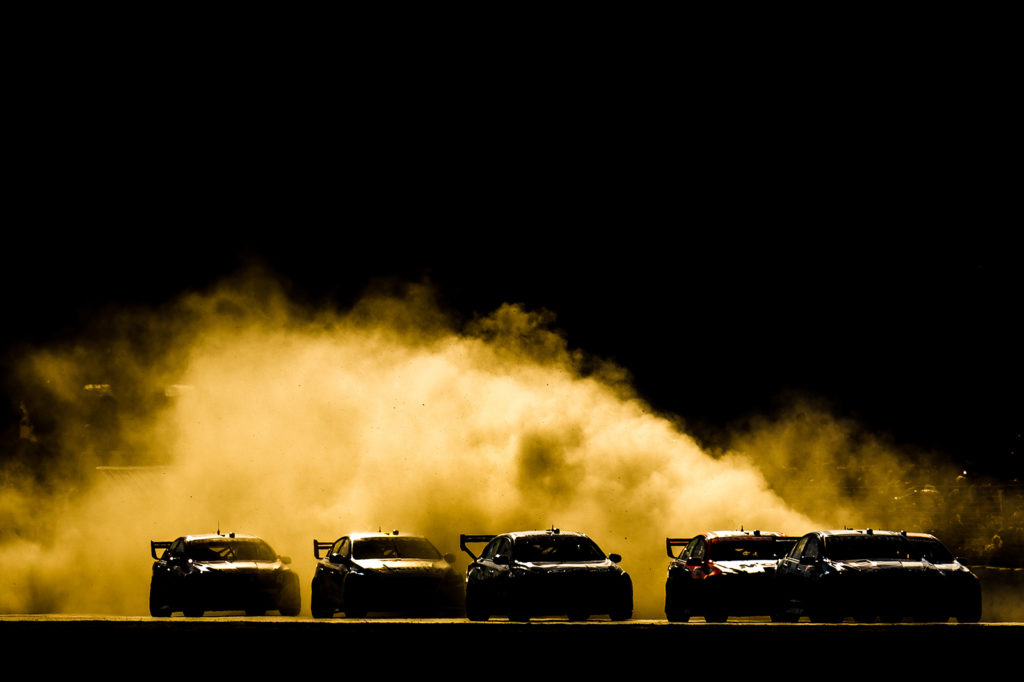
I was positioned off the grid for the start of the race as I thought it was a good opportunity to capture three different angles of the action.
This is the second, as the cars exit Turn 4.
I am a sucker for a backlit image and this turned out just as I planned, with several cars running wide and kicking up dust to create an amazing golden cloud around the pack.
Nikon D4S Lens 500mm
ISO 200, Aperture F/7.1, Shutter speed 1/1000sec
6.
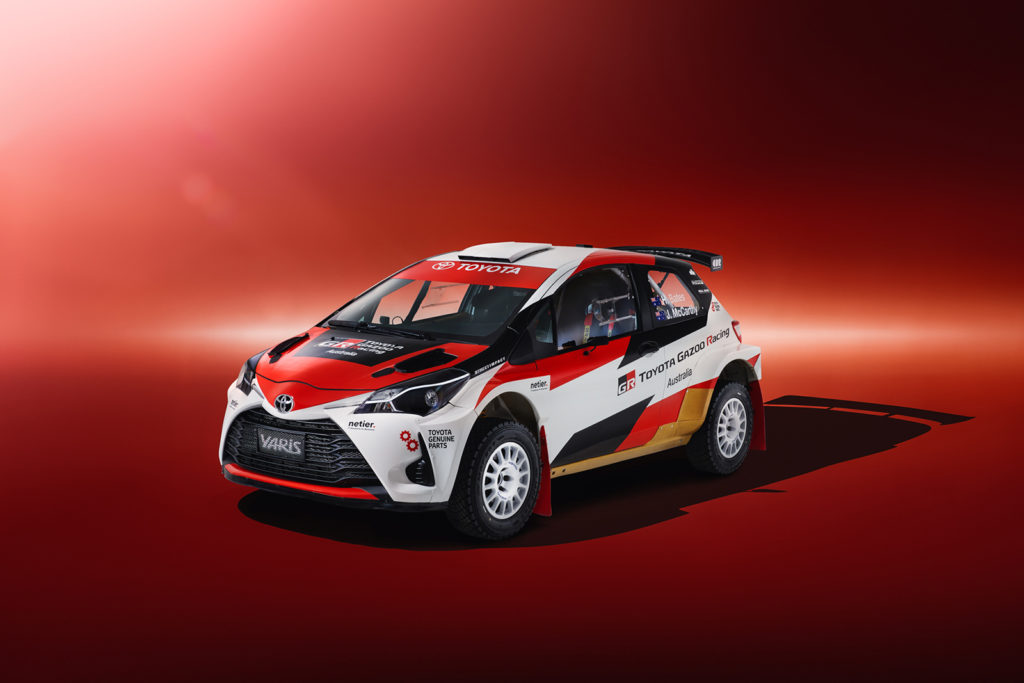
This studio study was the result of an opportunity to work with Toyota Gazoo Racing and Neal Bates Motorsport on their launch package.
The composite image was captured in a Sydney studio with approximately 15 individual frames making up the final composite picture with a multitude of different lighting effects to create the final result.
Unfortunately, due to the nature of modern motorsport, seldom do race cars get photographed in a studio. It could be a lack of budget or time, but this time the result shows the amazing return on doing something properly.
Nikon D830
Lens 24-70mm
7.
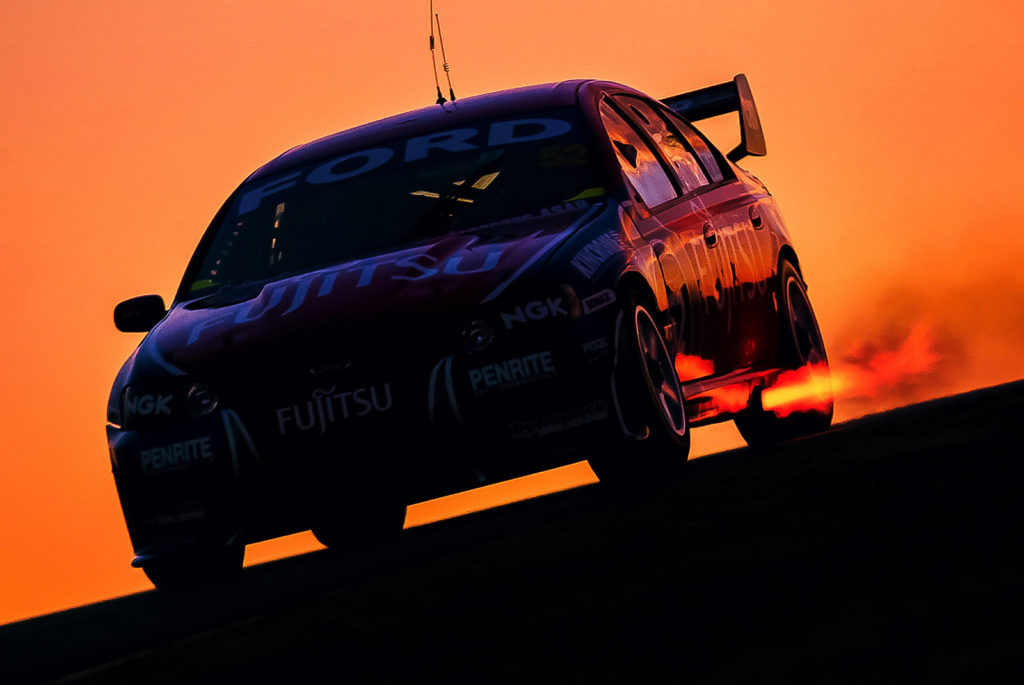
This is one of my all-time favourite and inspiring images, captured during the ride session held on the Friday evening of the event.
The sun had started to set and I sensed an opportunity to capture a beautiful silhouette of a Supercar.
Racing down to the hump above the access road to the pits, I was blown away with the incredible glow in the sky and with pure luck I managed to capture the huge burst of flame as Jason flat-shifted up another gear.
Canon EOS-1D Lens 100-400mm
ISO 250, Aperture F/4, Shutter speed 1/400sec
8.
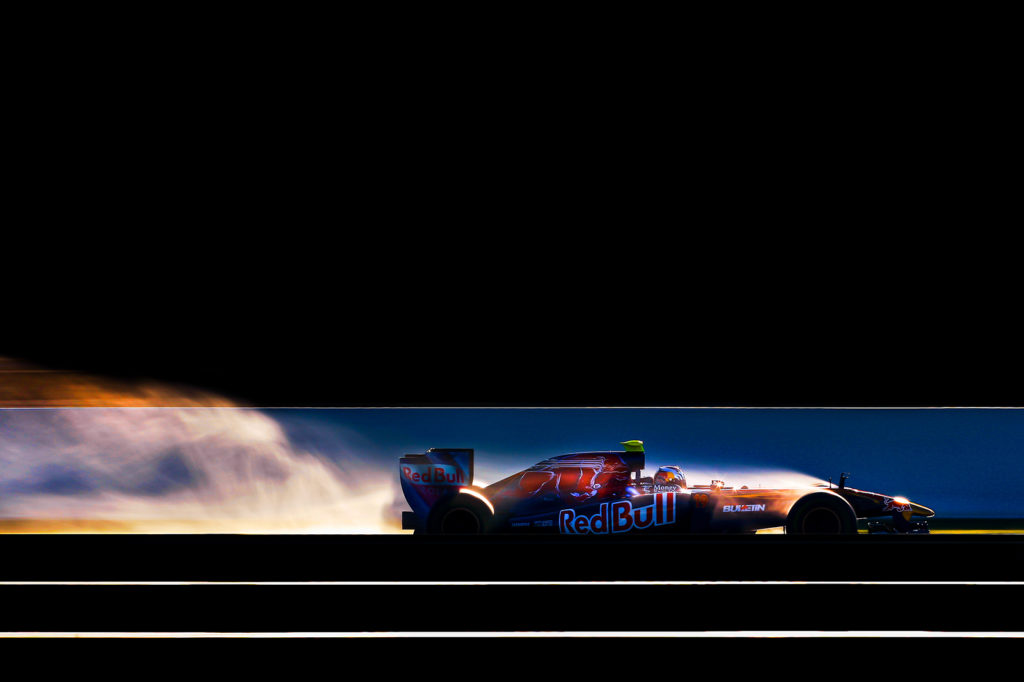
Ask me “What is the favourite image you have captured in your career?”and the answer is this picture.
This image from Formula One testing captures everything that I aspire to, as it is both visually and technically perfect.
It was captured early in the morning on the approach into Turn 1, with back-lighting and spray, a photographer’s dream.
Canon EOS-1D MK III Lens 70-200mm
ISO 50, Aperture F/13, Shutter speed 1/100sec
9.
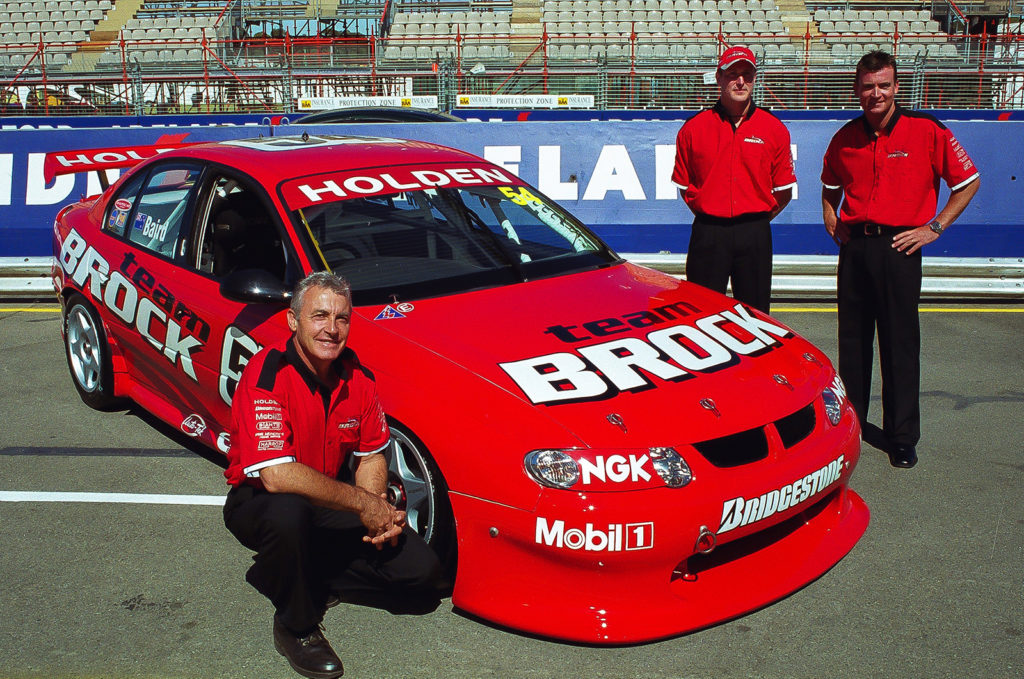
The 2002 Clipsal 500 marked the second year of my career in motorsport photography and I was only 19 and new to the business.
Searching the pitlane for photo opportunities prior to the event I stumbled on the launch of Team Brock, an opportunity not to be missed.
After politely asking the photographer (whom later I had learnt had been commissioned to shoot the next cover of Motor racing Australia) if I could take a photo, he kindly agreed and armed with my dad’s Canon EOS 5, 28-80mm lens and on-board flash I took one frame.
This was on film and I was on a budget, but I sent my picture to MRA in the hope of beating the other photographer to the cover.
When I saw the magazine in the newsagent the following month I was amazed to see my image had made it over his.
I later asked the editor why they chose my image over his and he simply said it was a higher resolution and looked better. Those words taught me a great deal.
This was my very first cover and I still own two copies and have one framed.
Canon EOS 5
Lens 28-80mm
10.
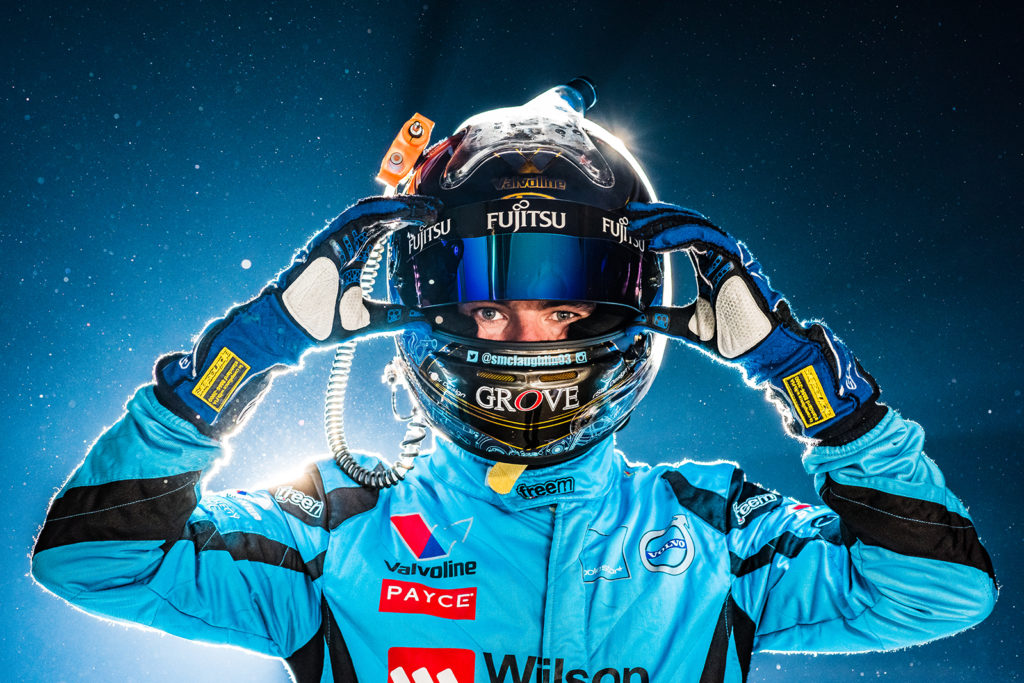
Outer-space – and not photo-shopped.
I was lucky to have some amazing access through working with Volvo and Scott and, to his credit he is always willing to get involved in any photo requests that I make.
This shot was captured at 7.21pm on the Saturday before the race, using a variety of lighting techniques including two flashes positioned behind the subject and one ice light to light-up the front of the subject.
With an incredible amount of dust and smoke appearing in the background, thanks to nearby campers, I was able to create something a little special.
Canon EOS-1D X Lens 85mm
ISO 2000, Aperture F/5.6, Shutter speed 1/125sec
BONUS SHOT:
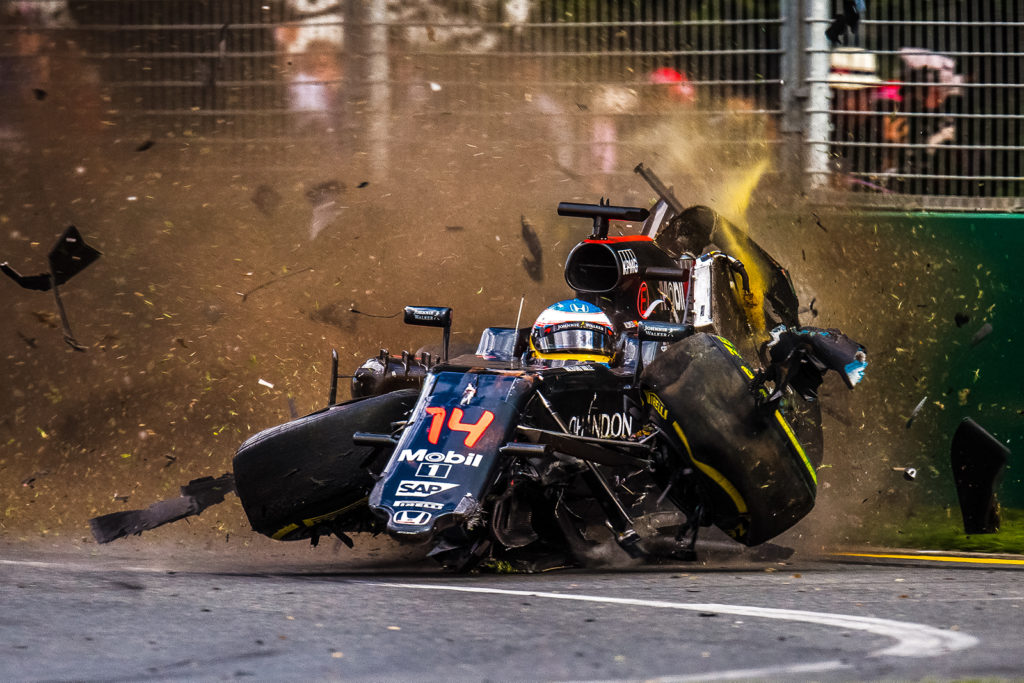
Who doesn’t remember this?
It was the biggest racing crash I have ever witnessed and photographed.
Positioned down at Turn 3 for the start of the race the first few laps rolled on by with nothing much happening, but you always keeps a watching eye through the lens as you never know what will happen next.
Suddenly there were Esteban Guttierez and Fernando Alonso and within a split-second Fernando had speared off to the right of my frame.
In that moment I remember thinking ‘Fernando has hit Esteban and and is heading to the wall’ so I decided to track his car as he went to his meeting with the wall at 305km/h.
I continued to capture the crash until his car filled my frame and flew upside-down coming to a rest metres to my right.
Did I duck? Yes, but only after I took my pictures.
Nikon D5 Lens 500mm with 1.4x TC
ISO 640, Aperture F/5.6, Shutter speed 1/800sec


